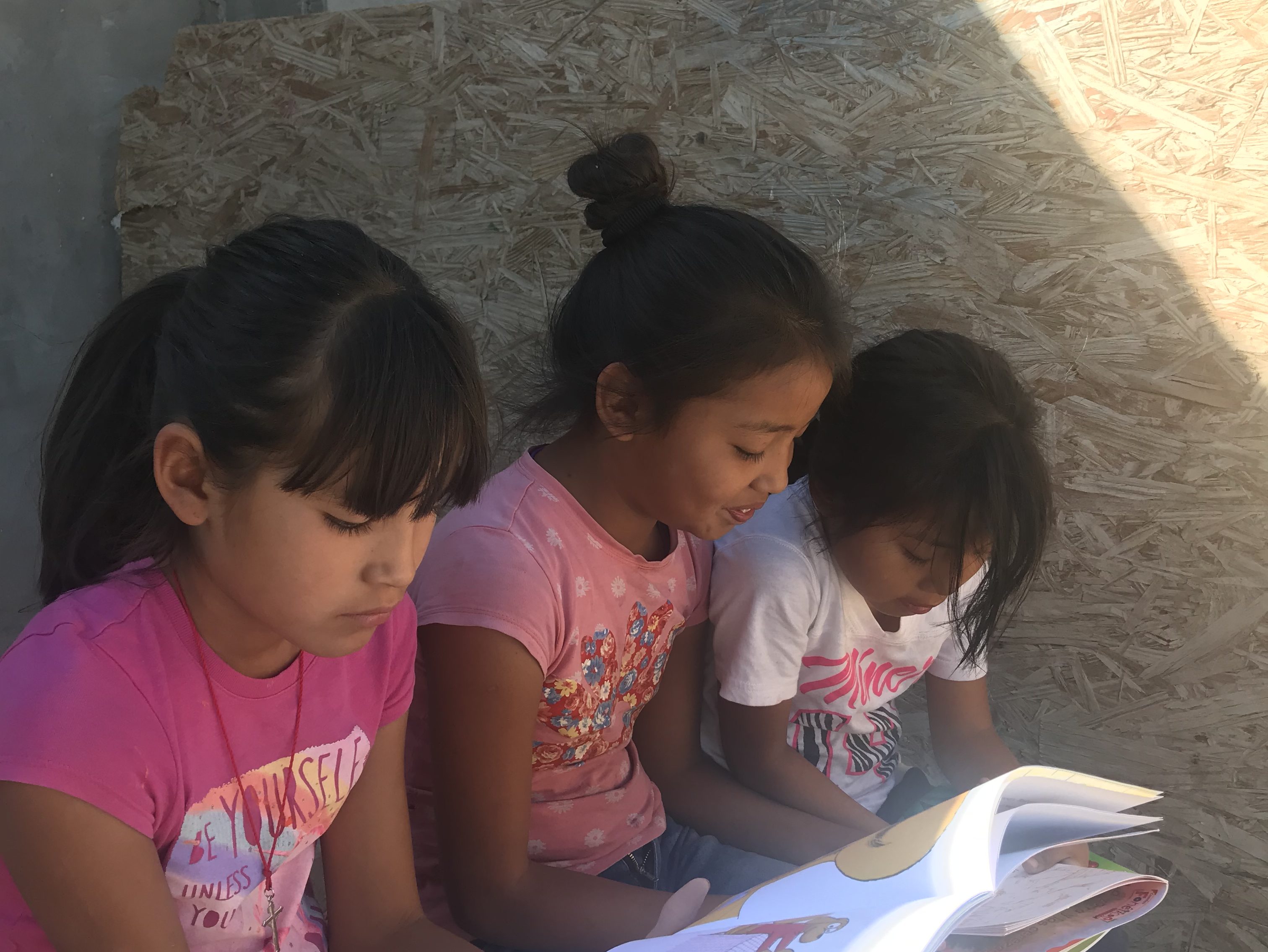That first year I spent in the new neighborhood in Juarez, the streets were all still dirt. Most people lived in houses made of pallets, cardboard, and tarps. They looked like a child’s backyard fort. There was no electricity or running water. A few huts had a long cable running to a light pole in the next neighborhood, bootlegging electricity in a dangerous way. A water truck came by once a week and filled open barrels at each home. One barrel a week was free. Holes were dug for outdoor latrines. In the winter a bucket of water was heated with a flat iron connected to that long cable or else over a fire. Pitiful dogs roamed everywhere. There were no cats.
The families lived in these huts to claim their lot. They lived day to day hoping for someone to build them a real house. There were a few different styles, some of chicken wire and stucco, some of wood and black tarpaper, and some of block. The block houses were really just a room. They measured about 12 by 20 feet and had no plumbing or roughed in electricity. They usually had one window and one door, no glass included.
That summer, a team of teenagers spent two weeks helping build in the same neighborhood where I was beginning my literacy program. I did children’s activities, read-alouds, and music. I also tried to find something for the moms to do. The teens would take work breaks and join in. One mom had been given a sewing machine, and one teen helped her sew a pair of pajama pants, her first project.
The neighborhood was covered in old tires. We rolled some to the house where we were working and painted them. Some were made into seating as we wove rope through the holes the papá drilled for us.
One day all the mamás came to the children’s activities and painted a mat with their house number and their family name to hang at the doors of their new houses. They were very proud of their work.
During that same time, one of the young girls in the neighborhood was having her quinceañera. She was the daughter of a pastor and had lived in Oklahoma for a while. They had moved back, but she spoke perfect English. She invited all of us to her party. She wanted us to feel a part of the neighborhood.
During the work week, the teenagers had been singing. Most were a part of a singing group at school and at church. They had beautiful voices. At the quince, the celebrated girl asked the group if they would like to sing. They asked her what song. She said “Cinderella”. The teens went out to the parking lot for a few minutes of practice and returned to serenade a special teen on her special night. Acapella “I’ll dance with Cinderella” was the best version of the song I had ever heard.
So many gifts were shared that summer between two cultures and different age groups. Even in a dusty neighborhood of huts, there was a little piece of heaven…”thy kingdom come”.
